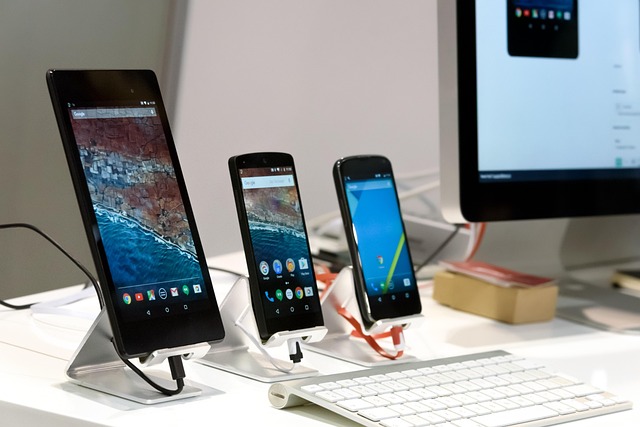Since its inception in 2008, Android has grown from a nascent mobile operating system to the world’s most widely used platform, powering billions of devices globally. Each Android version has introduced significant improvements, shaping the user experience, enhancing performance, and pushing the boundaries of mobile technology.
Android 1.0 (2008) Release Date: September 2008
Codename: None (unofficially referred to as “Apple Pie”)
Key Improvements:
Android 1.0 debuted on the HTC Dream (T-Mobile G1), marking Google’s entry into the mobile OS market. It introduced a customizable home screen, widgets, and a notification shade—features that became Android hallmarks. The Android Market (now Google Play Store) allowed app downloads, though the ecosystem was sparse. Integration with Google services like Gmail, Google Maps, and YouTube provided a cohesive experience. The OS supported Wi-Fi, Bluetooth, and basic multitasking, but it was rudimentary compared to modern standards, with a clunky interface and limited hardware support.
Android 1.5 Cupcake (April 2009)
Cupcake brought significant refinements. It introduced an on-screen keyboard, enabling touchscreen-only devices and reducing reliance on physical keyboards. Auto-rotation based on accelerometer input improved usability. Video recording and playback support, along with Bluetooth A2DP for stereo audio, enhanced multimedia capabilities. Widgets became more interactive, and the browser gained copy-paste functionality. Cupcake also introduced third-party keyboard support, laying the groundwork for customization.

Android 1.6 Donut (September 2009)
Donut optimized Android for a wider range of devices by supporting multiple screen resolutions and densities-independent pixels (dp). The introduction of the Quick Search Box integrated web and device searches. Text-to-speech functionality and improved accessibility features made Android more inclusive. The Android Market saw UI improvements, and CDMA network support expanded compatibility. Camera enhancements, including faster capture and better gallery navigation, improved the multimedia experience.
Android 2.0–2.1 Éclair (October 2009–January 2010)
Éclair introduced a revamped user interface with smoother animations and live wallpapers, adding visual flair. Google Maps Navigation debuted, offering free turn-by-turn GPS navigation—a game-changer at the time. Multi-touch support in the browser enabled pinch-to-zoom, and the camera app gained flash support and scene modes. Microsoft Exchange support catered to enterprise users. Éclair also improved hardware performance with better memory management and faster app launches.
Android 2.2 Froyo (May 2010)
Froyo focused on performance with the introduction of the Just-In-Time (JIT) compiler, significantly boosting app execution speed. Users could move apps to SD cards, addressing storage limitations on early devices. Wi-Fi hotspot functionality and USB tethering allowed internet sharing. The Android Market gained a web interface, and push notifications via Google Cloud Messaging improved app interactivity. Froyo also enhanced security with numeric PIN and alphanumeric password options.
Android 2.3 Gingerbread (December 2010)
Gingerbread refined the UI with a darker, more polished design and improved keyboard responsiveness. It introduced native support for VoIP/SIP calling and near-field communication (NFC), enabling contactless payments on compatible devices. Power management was optimized with better battery usage monitoring. Copy-paste functionality became more intuitive, and the Download Manager streamlined file handling. Gingerbread also supported larger screens, paving the way for tablets.
Android 3.0–3.2 Honeycomb (February 2011–July 2011)
Honeycomb was Android’s tablet-optimized release, debuting on the Motorola Xoom. It introduced a holographic UI with a system bar for navigation and an action bar for app controls. Multitasking was enhanced with a recent apps tray, and hardware-accelerated graphics improved performance. Honeycomb supported USB peripherals like keyboards and game controllers, and the browser gained tabbed browsing and incognito mode. However, its tablet exclusivity limited its impact on smartphones.
Android 4.0 Ice Cream Sandwich (October 2011)
Ice Cream Sandwich unified the smartphone and tablet experience, merging Honeycomb’s features with a polished UI. It introduced a modern design with the Roboto font, resizable widgets, and a customizable launcher. Face Unlock used facial recognition for security, and Android Beam leveraged NFC for content sharing. Data usage monitoring, improved multitasking, and a revamped notification system enhanced usability. The browser and Gmail app received significant updates, and GPU acceleration became standard.
Android 4.1–4.3 Jelly Bean (July 2012–October 2013)
Jelly Bean introduced Project Butter, making the UI buttery smooth with triple buffering and vsync for 60fps animations. Google Now, a predictive assistant, debuted with voice search and contextual cards. Expandable notifications allowed quick actions, and lock screen widgets added functionality. Jelly Bean 4.2 brought multi-user support for tablets, Photo Sphere for 360-degree photography, and Daydream screensavers. Jelly Bean 4.3 added OpenGL ES 3.0 support and restricted profiles for better parental controls.
Android 4.4 KitKat (October 2013)
KitKat optimized Android for low-end devices with Project Svelte, reducing memory usage to run on devices with as little as 512MB of RAM. The UI adopted a cleaner look with translucent status and navigation bars. Google Now integration deepened with “OK Google” voice activation. The phone dialer gained smart caller ID, and immersive mode hid system bars for full-screen apps. KitKat also introduced the Android Runtime (ART) as an experimental feature, improving app performance.
Android 5.0–5.1 Lollipop (November 2014–March 2015)
Lollipop introduced Material Design, a bold visual language with vibrant colors, fluid animations, and a card-based UI. ART became the default runtime, boosting performance and battery life. Project Volta optimized power consumption with battery saver mode and detailed usage stats. Notifications appeared on the lock screen, and Smart Lock allowed trusted devices to bypass security. Multi-user support extended to phones, and 64-bit architecture support prepared Android for future hardware.
Android 6.0 Marshmallow (October 2015)
Marshmallow focused on user control and efficiency. App permissions became granular, allowing users to toggle specific permissions. Doze mode and App Standby drastically improved battery life by limiting background activity. Google Now on Tap provided contextual information from any screen. Fingerprint sensor support became native, enhancing security. Marshmallow also introduced USB-C support, direct share for faster sharing, and a revamped app drawer with vertical scrolling and search.
Android 7.0–7.1 Nougat (August 2016–October 2016)
Nougat introduced split-screen multitasking, allowing two apps to run side-by-side. Notifications were bundled for better organization, with quick reply support directly from the notification shade. The Doze mode was enhanced to save battery even when the device was in motion. Nougat added Daydream VR support, seamless updates for faster OS upgrades, and improved security with file-based encryption. It also introduced the Pixel Launcher and Google Assistant, replacing Google Now.
Android 8.0–8.1 Oreo (August 2017–December 2017)
Oreo focused on performance and security. Project Treble modularized the OS, enabling faster updates by separating vendor code from the core system. Autofill APIs streamlined form filling, and picture-in-picture mode allowed video playback in a floating window. Notification channels gave users granular control over alerts, and adaptive icons improved visual consistency. Oreo 8.1 added the Neural Networks API for on-device machine learning and optimized performance for low-end devices via Android Go.
Android 9 Pie (August 2018)
Pie introduced gesture navigation, replacing traditional buttons with a swipe-based system. Adaptive Battery used AI to prioritize power for frequently used apps, while Adaptive Brightness learned user preferences. The Digital Wellbeing suite, including Dashboard and App Timers, promoted mindful device use. Slices and App Actions integrated app functions into Google Search and Assistant. Pie also enhanced security with DNS over TLS and improved biometric authentication.
Android 10 (September 2019)
Android 10 dropped dessert names, adopting numerical branding. It introduced system-wide dark mode, improving battery life on OLED displays and reducing eye strain. Gesture navigation was refined for a more immersive experience. Live Caption automatically subtitled media, enhancing accessibility. Focus Mode and Family Link expanded Digital Wellbeing. Project Mainline enabled modular updates via Google Play, and enhanced privacy controls allowed precise location sharing and background app restrictions.
Android 11 (September 2020)
Android 11 emphasized communication and media control. The notification shade grouped conversations for easier access, and chat bubbles enabled multitasking for messaging apps. A dedicated media control widget and device controls for smart home integration improved usability. One-time permissions and auto-resetting permissions enhanced privacy. Android 11 also optimized for foldable devices and 5G, with improved screen recording and wireless Android Auto support.
Android 12 (October 2021)
Android 12 introduced Material You, a dynamic theming system that adapted colors based on the user’s wallpaper. The UI became more fluid with oversized scrollbars, redesigned widgets, and smoother animations. Privacy Dashboard provided transparency into app data access, and approximate location sharing added granularity. Android 12 improved performance on large screens, supporting foldables and tablets. It also introduced a new app hibernation feature to free up storage and enhanced accessibility with magnification tools.
Android 13 (August 2022)
Android 13 refined Material You with more color options and themed app icons. Per-app language settings improved multilingual support. Predictive back gestures showed previews of navigation actions, enhancing user confidence. Taskbar improvements and better split-screen support optimized large-screen devices. Android 13 also strengthened security with Wi-Fi and Bluetooth permission controls and restricted access to media files, reducing app overreach.
Android 14 (October 2023)
Android 14 focused on customization and efficiency. It expanded Material You with new lock screen customization options, including clock styles and shortcuts. Regional preferences allowed tailored units and formats. Battery life improved with better resource management and predictive app loading. Android 14 enhanced satellite connectivity support for emergency communication and optimized performance for foldables and tablets with updated multitasking features. Accessibility was bolstered with larger font scaling and improved hearing aid support.
Android 15 (October 2024)
Android 15, the latest version as of July 2025, emphasized privacy, productivity, and cross-device integration. Private Space allowed users to secure sensitive apps in a hidden, encrypted area. Enhanced satellite messaging expanded beyond emergencies, supporting select messaging apps. The notification cooldown feature reduced spam from repetitive alerts. Android 15 optimized foldable and tablet experiences with a persistent taskbar and improved app scaling. AI-driven features, like predictive text input and smarter battery optimization, leveraged on-device machine learning. Accessibility improvements included enhanced color contrast and braille display support.
Android’s journey from version 1.0 to 15 showcases a commitment to innovation, accessibility, and user empowerment. Early versions focused on establishing a flexible, open-source platform, while later releases prioritized performance, privacy, and seamless integration across devices. Key trends include:
- Performance: From JIT in Froyo to ART in KitKat and Project Treble in Oreo, Android has consistently optimized speed and efficiency.
- Privacy and Security: Granular permissions (Marshmallow), Privacy Dashboard (Android 12), and Private Space (Android 15) reflect growing emphasis on user control.
- Customization: Material Design (Lollipop) and Material You (Android 12) have made Android visually distinct and user-centric.
- Ecosystem Expansion: Support for foldables, tablets, wearables, and satellite connectivity shows Android’s adaptability to diverse hardware.
As of July 2025, Android powers over 2.5 billion active devices, according to industry estimates, dominating the global smartphone market. Its open-source nature and robust developer ecosystem ensure continued evolution. Future versions are expected to deepen AI integration, expand cross-device functionality, and further enhance privacy, keeping Android at the forefront of mobile innovation.

